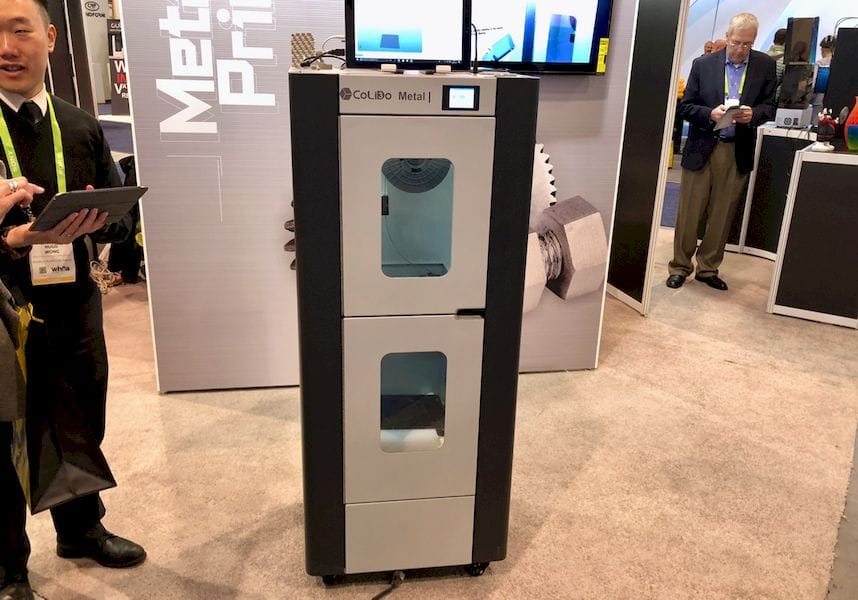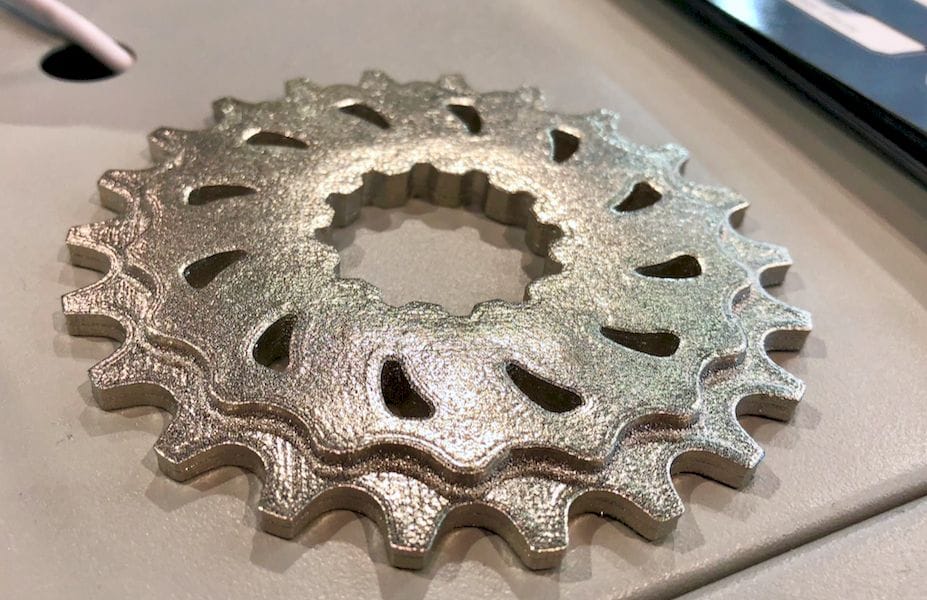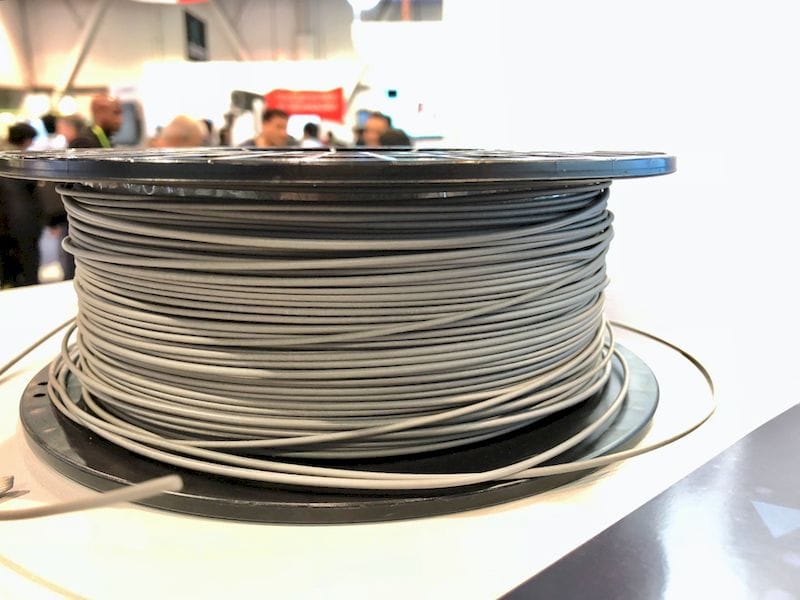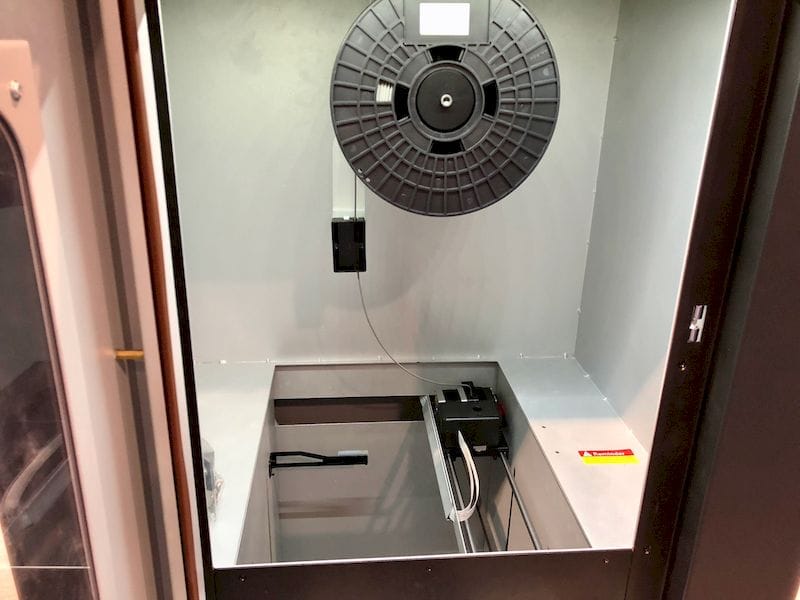
At CES we saw CoLiDo’s new industrial 3D metal printer.
While CoLiDo has long been known for their desktop thermoplastic 3D printers, their new, simply named, “CoLiDo Metal” device joins the growing list of relatively inexpensive 3D metal printing equipment that has recently emerged.
Companies such as CoLiDo, Markforged, Desktop Metal and others are attacking the high-priced 3D metal printing market currently dominated by the big players, including EOS, GE, 3D Systems, all of which employ rather complex 3D metal printing processes that are quite expensive to use.

The new wave of equipment, including CoLiDo’s new Metal machine, use a multi-step process to produce the 3D metal prints. In CoLiDo’s case, their machine is very similar to any common plastic extrusion machine, but the difference is in the filament.
The special metal filament they use, we’re told, is more than 90% metal powder, mixed with a far lesser amount of polymer binder. This is used to 3D print objects in the usual manner.

Then there is a two step process to convert this print into a fully metal 3D part. First, there is a catalytic process that removes the minor amount of binder present after 3D printing.
The final step is to place the part into a furnace, where the high temperatures will sinter the metal particles into solid form. CoLiDo says the final parts do shrink approximately 20% after the entire process completes.

Aside from cost, which I’ll discuss in a moment, the big advantage over traditional 3D metal printing processes is the absence of loose powder. Such powder is commonly used, but because it’s loose it must be very carefully managed to avoid toxic human exposure or even spontaneous explosion.
In the CoLiDo system, the powder is securely embedded in the filament by the polymer binder.
Now the pricing. CoLiDo says the price of the printer itself will be between USD$20-30K, far lower than other traditional 3D metal printing options.
They also say that a complete system, which would include the additional machines required to handle all steps towards the final metal part, when added with the printer, would cost around USD$100K. That’s also far less than the cost of a complete setup for a traditional 3D metal printing system, which itself requires a number of pricey post-processing machines.
But this is the interesting part: CoLiDo is targeting this machine to the industrial market. Now imagine a metal workshop that already has the additional equipment due to an existing metal process: such companies would need only add the printer to immediately begin 3D printing in metal. They can leverage their existing metal handling equipment and gain new capabilities almost overnight.
I think this is a very good strategy for CoLiDo.
Via CoLiDo

